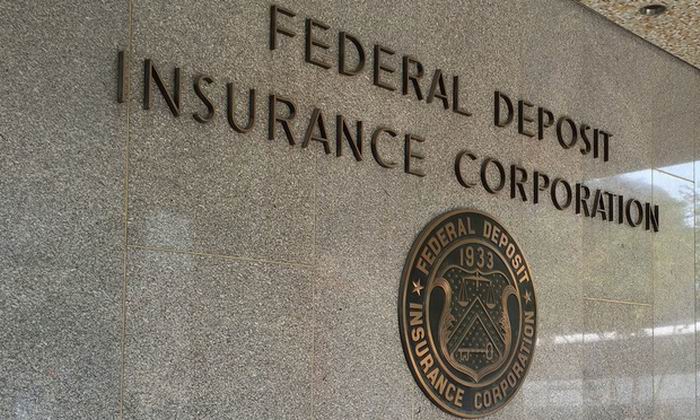Welcome to this comprehensive article that delves into the realm of the Federal Deposit Insurance Corporation (FDIC). In today’s uncertain financial landscape, it is crucial to understand the importance of protecting your hard-earned money. The FDIC plays a pivotal role in maintaining the stability and integrity of the U.S. banking system, instilling confidence in depositors and providing vital insurance coverage for their deposits. This article aims to shed light on the FDIC’s functions, history, regulations, and the reassurance it offers to the American public.
What is the Federal Deposit Insurance Corporation?
The Federal Deposit Insurance Corporation, commonly known as the FDIC, is an independent agency of the United States government. It was established in 1933 during the Great Depression to restore stability and confidence in the nation’s banking sector. The primary mission of the FDIC is to protect depositors and ensure the safety of their funds in the event of a bank failure.
The FDIC’s Role in Banking Regulation
The FDIC acts as both a regulatory and an insurance agency. It oversees thousands of financial institutions, including banks and savings associations, to ensure their compliance with federal banking laws and regulations. The agency’s vigilant supervision and examination processes are designed to promote a safe and sound banking system.
FDIC Insurance Coverage: Your Deposits are Protected
One of the core functions of the FDIC is providing deposit insurance coverage to depositors in member banks. This coverage acts as a safeguard against the loss of funds in case of a bank failure. Currently, the standard insurance coverage is $250,000 per depositor, per insured bank. This means that if you have multiple accounts in the same bank, your total deposits up to $250,000 are insured.
The History of FDIC Insurance
Since its establishment, the FDIC has played a crucial role in maintaining public confidence in the banking system. It has successfully weathered several financial crises and has adapted its policies to meet evolving challenges. The FDIC’s insurance coverage has instilled trust and stability in the minds of depositors, ensuring the resilience of the U.S. financial infrastructure.
The Significance of FDIC Membership
To ensure the safety of your deposits, it is important to bank with institutions that are FDIC members. When a bank carries the “Member FDIC” logo, it signifies that the deposits held in that institution are insured by the FDIC. This provides peace of mind to depositors, assuring them that their money is protected in the event of a bank failure.
How Does the FDIC Protect Depositors?
The FDIC protects depositors by monitoring the financial health and compliance of member institutions. It conducts regular examinations to assess their safety and soundness, evaluates risk management practices, and ensures that banking regulations are followed. In case a member bank fails, the FDIC steps in to minimize disruption and protect depositors’ interests.
FAQs
1. What types of accounts does the FDIC insure?
The FDIC insures a wide range of deposit accounts, including checking accounts, savings accounts, money market deposit accounts, and certificates of deposit (CDs). These accounts are insured as long as they are held in an FDIC member bank and meet the requirements for coverage.
2. Are my deposits insured if I have accounts in multiple banks?
Yes, FDIC insurance coverage is applied on a per depositor, per insured bank basis. If you have accounts in different FDIC member banks, each account is separately insured up to $250,000. This means that if you have deposits in multiple banks, each deposit is protected up to $250,000 in each bank, providing you with a higher level of coverage.
3. Are there any types of deposits that are not covered by FDIC insurance?
While the majority of deposits are covered by FDIC insurance, there are certain types of investments that are not insured. These include stocks, bonds, mutual funds, annuities, and life insurance policies. It is important to understand the distinction between deposits and investments to ensure you are aware of the level of protection provided by the FDIC.
4. How quickly does the FDIC reimburse depositors in the event of a bank failure?
The FDIC aims to minimize disruption and ensure a prompt reimbursement process in the event of a bank failure. In most cases, depositors are reimbursed within a few days after a bank is closed. The FDIC works diligently to transfer deposits to other institutions or provide depositors with access to their insured funds as quickly as possible.
5. Can the FDIC prevent a bank from failing?
While the FDIC actively monitors and regulates banks to prevent failures, it cannot guarantee that a bank will never fail. Banks operate in a dynamic and complex environment, and there are instances where banks face insurmountable challenges. However, the FDIC’s presence and oversight help to minimize the impact of bank failures and protect depositors’ interests.
6. How can I verify if my bank is FDIC insured?
Verifying if your bank is FDIC insured is simple. The easiest way is to look for the “Member FDIC” logo displayed prominently in the bank’s branches or website. Additionally, you can visit the FDIC’s official website and use their “BankFind” tool to search for your bank and confirm its FDIC membership.




